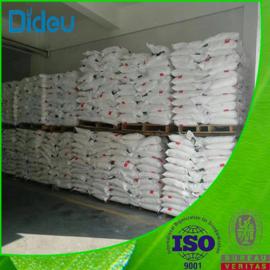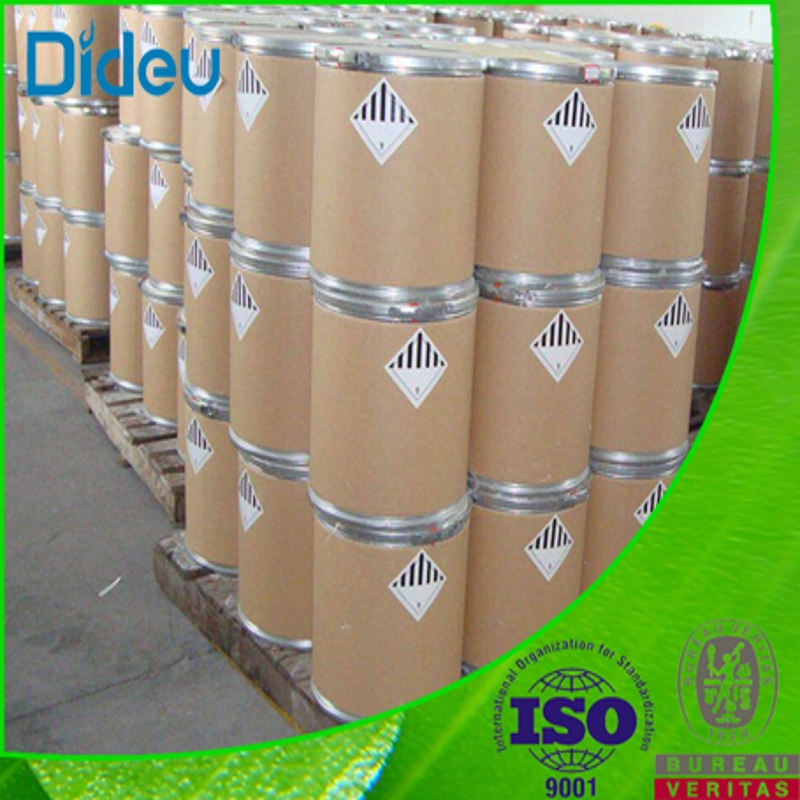-
Categories
-
Pharmaceutical Intermediates
-
Active Pharmaceutical Ingredients
-
Food Additives
- Industrial Coatings
- Agrochemicals
- Dyes and Pigments
- Surfactant
- Flavors and Fragrances
- Chemical Reagents
- Catalyst and Auxiliary
- Natural Products
- Inorganic Chemistry
-
Organic Chemistry
-
Biochemical Engineering
- Analytical Chemistry
-
Cosmetic Ingredient
- Water Treatment Chemical
-
Pharmaceutical Intermediates
Promotion
ECHEMI Mall
Wholesale
Weekly Price
Exhibition
News
-
Trade Service
iNature circular RNAs (CircRNAs) play important roles in different diseases
.
Exosomes are important intermediates in intercellular communication
.
While both have been widely reported in cancer, studies of exosome-derived circRNAs have been rare
.
On January 12, 2022, Fudan University Jiang Haowen's team published an online article entitled "Exosome derived circTRPS1 promotes malignant phenotype and CD8+ Tcell exhaustion in bladder cancer microenvironment through modulating reactive oxygen species equilibrium via GLS1 mediated glutamine metabolism alteration in Molecular Therapy (IF=11).
”, which identified differentially expressed circRNAs in bladder cancer (BCA) tissues and exosomes by high-throughput sequencing
.
This study found that exosome-derived hsa_CIRC_0085361 (CircTRPS1) was associated with the aggressive phenotype of BCA cells
.
Metabolomics and RNA-seq analysis (RNA-seq) confirmed that GLS1-mediated glutamine metabolism is involved in CircTRPS1-mediated changes in cellular phenotype
.
Furthermore, CircTRPS1 knockdown of BCA cell-derived exosomes, co-cultured with CD8+ T cells, prevented CD8+ T cell depletion and suppressed the malignant phenotype of BCA cells
.
In conclusion, BCA cell exosome-derived CircTRPS1 regulates intracellular reactive oxygen species (ROS) balance and CD8+ T cell depletion through the CircTRPS1/miR141-3p/GLS1 axis
.
This work may provide a potential biomarker and therapeutic target for BCA
.
Bladder cancer (BCA) is the most common urological malignancy in the world, causing 17,980 tumor-related deaths annually
.
Despite some progress in diagnosis and treatment, the 5-year overall survival prognosis of bladder cancer is still unfavorable due to the rapid recurrence and distant metastasis of bladder cancer
.
Therefore, in-depth study of the underlying molecular mechanisms of BCA development and tumorigenesis will provide promising strategies and biomarkers for BCA
.
Exosomes are small vesicles of 30-150 nm that are delivered from different types of cells, including cancer cells, into the extracellular microenvironment
.
Accumulating evidence suggests that cancer cell-derived exosomes are involved in tumor-stromal crosstalk by metastasizing tumor-forming molecules, including noncoding RNAs and proteins, that are involved in promoting oncogenic phenotypes, immune escape, and chemoresistance
.
Circular RNAs (circRNAs) are ubiquitous in tissues and are very stable
.
Most circRNAs perform biological functions by regulating the competing endogenous RNA (ceRNA) network in the BCA, which means they work as microRNA (miRNA) sponges and regulate the expression of downstream genes
.
Tumor-derived exosomes are rich in circRNAs, which are important for cell-to-cell communication
.
Exosomes secreted by BCA cells may transport relative circRNAs to host cells to alter gene expression
.
Exosomal circRNAs are stably present in the blood or urine of BCA patients and have the potential to be clinically promising biomarkers
.
There is an urgent need to discover new BCA-associated exosomal circRNAs and to elucidate their molecular mechanisms in the malignant phenotype of BCA growth and metastasis
.
Aberrant metabolic reprogramming represents a malignant feature required for cancer cells to sustain proliferation in a nutrient-poor microenvironment
.
Glutamine metabolism protects cancer cells from reactive oxygen species (ROS)-mediated oxidative damage through glutathione (GSH)
.
Glutathione is the main antioxidant in cells, and in addition to generating energy and synthesizing macromolecules in the tricarboxylic acid (TCA) cycle, it also protects cancer cells through the production of glutathione (GSH)
.
Knockout of a key enzyme in glutamine metabolism: glutaminase (GLS) inhibits GSH production, leading to ROS accumulation, which is lethal to metabolically activated cancer cells
.
In addition to cancer cells, GLS-mediated glutamine metabolism affects the activity of multiple cell types in the tumor microenvironment (TMEs), including immune cell populations, cancer-associated fibroblasts (CAFs), and endothelial cells
.
CD8+ T cells are the main executors of various immune-related regulatory processes, and infiltration of tumor foci is associated with better prognosis in various malignancies including BCA
.
Pathways involved in glutamine shuttling and ROS homeostasis have distinct roles in the dynamics of T cell function and serve as important mechanisms of tumor immune evasion
.
However, the deep relationship between exosome-derived circRNAs and the infiltration and functional status of CD8+ T cells mediated through glutamine metabolism in the BCA microenvironment remains largely unknown
.
In this study, hsa_circ_0085361 (circTRPS1) was found to be one of the most significantly up-regulated circRNAs in BCA tumors and urine/serum-derived exosomes by high-throughput sequencing
.
Metabolomic and RNA-sequencing analyses confirmed that GLS1-mediated glutamine metabolism is involved in the cancer-promoting phenotype of TRPS1-induced BCA mainly by regulating intracellular ROS balance
.
Exosomes derived from BCA cells with knockdown of circTRPS1 prevented CD8+ T cells from entering a state of exhaustion and suppressed the malignant phenotype of BCA cells in vitro and in vivo
.
Schematic representation of exosome-derived circTRPS1 in the BCa tumor microenvironment.
In conclusion, this study provides a potential intervention strategy for future BCA therapy based on exosome-derived circRNAs
.
Reference message: https://doi.
org/10.
1016/j.
ymthe.
2022.
01.
022
.
Exosomes are important intermediates in intercellular communication
.
While both have been widely reported in cancer, studies of exosome-derived circRNAs have been rare
.
On January 12, 2022, Fudan University Jiang Haowen's team published an online article entitled "Exosome derived circTRPS1 promotes malignant phenotype and CD8+ Tcell exhaustion in bladder cancer microenvironment through modulating reactive oxygen species equilibrium via GLS1 mediated glutamine metabolism alteration in Molecular Therapy (IF=11).
”, which identified differentially expressed circRNAs in bladder cancer (BCA) tissues and exosomes by high-throughput sequencing
.
This study found that exosome-derived hsa_CIRC_0085361 (CircTRPS1) was associated with the aggressive phenotype of BCA cells
.
Metabolomics and RNA-seq analysis (RNA-seq) confirmed that GLS1-mediated glutamine metabolism is involved in CircTRPS1-mediated changes in cellular phenotype
.
Furthermore, CircTRPS1 knockdown of BCA cell-derived exosomes, co-cultured with CD8+ T cells, prevented CD8+ T cell depletion and suppressed the malignant phenotype of BCA cells
.
In conclusion, BCA cell exosome-derived CircTRPS1 regulates intracellular reactive oxygen species (ROS) balance and CD8+ T cell depletion through the CircTRPS1/miR141-3p/GLS1 axis
.
This work may provide a potential biomarker and therapeutic target for BCA
.
Bladder cancer (BCA) is the most common urological malignancy in the world, causing 17,980 tumor-related deaths annually
.
Despite some progress in diagnosis and treatment, the 5-year overall survival prognosis of bladder cancer is still unfavorable due to the rapid recurrence and distant metastasis of bladder cancer
.
Therefore, in-depth study of the underlying molecular mechanisms of BCA development and tumorigenesis will provide promising strategies and biomarkers for BCA
.
Exosomes are small vesicles of 30-150 nm that are delivered from different types of cells, including cancer cells, into the extracellular microenvironment
.
Accumulating evidence suggests that cancer cell-derived exosomes are involved in tumor-stromal crosstalk by metastasizing tumor-forming molecules, including noncoding RNAs and proteins, that are involved in promoting oncogenic phenotypes, immune escape, and chemoresistance
.
Circular RNAs (circRNAs) are ubiquitous in tissues and are very stable
.
Most circRNAs perform biological functions by regulating the competing endogenous RNA (ceRNA) network in the BCA, which means they work as microRNA (miRNA) sponges and regulate the expression of downstream genes
.
Tumor-derived exosomes are rich in circRNAs, which are important for cell-to-cell communication
.
Exosomes secreted by BCA cells may transport relative circRNAs to host cells to alter gene expression
.
Exosomal circRNAs are stably present in the blood or urine of BCA patients and have the potential to be clinically promising biomarkers
.
There is an urgent need to discover new BCA-associated exosomal circRNAs and to elucidate their molecular mechanisms in the malignant phenotype of BCA growth and metastasis
.
Aberrant metabolic reprogramming represents a malignant feature required for cancer cells to sustain proliferation in a nutrient-poor microenvironment
.
Glutamine metabolism protects cancer cells from reactive oxygen species (ROS)-mediated oxidative damage through glutathione (GSH)
.
Glutathione is the main antioxidant in cells, and in addition to generating energy and synthesizing macromolecules in the tricarboxylic acid (TCA) cycle, it also protects cancer cells through the production of glutathione (GSH)
.
Knockout of a key enzyme in glutamine metabolism: glutaminase (GLS) inhibits GSH production, leading to ROS accumulation, which is lethal to metabolically activated cancer cells
.
In addition to cancer cells, GLS-mediated glutamine metabolism affects the activity of multiple cell types in the tumor microenvironment (TMEs), including immune cell populations, cancer-associated fibroblasts (CAFs), and endothelial cells
.
CD8+ T cells are the main executors of various immune-related regulatory processes, and infiltration of tumor foci is associated with better prognosis in various malignancies including BCA
.
Pathways involved in glutamine shuttling and ROS homeostasis have distinct roles in the dynamics of T cell function and serve as important mechanisms of tumor immune evasion
.
However, the deep relationship between exosome-derived circRNAs and the infiltration and functional status of CD8+ T cells mediated through glutamine metabolism in the BCA microenvironment remains largely unknown
.
In this study, hsa_circ_0085361 (circTRPS1) was found to be one of the most significantly up-regulated circRNAs in BCA tumors and urine/serum-derived exosomes by high-throughput sequencing
.
Metabolomic and RNA-sequencing analyses confirmed that GLS1-mediated glutamine metabolism is involved in the cancer-promoting phenotype of TRPS1-induced BCA mainly by regulating intracellular ROS balance
.
Exosomes derived from BCA cells with knockdown of circTRPS1 prevented CD8+ T cells from entering a state of exhaustion and suppressed the malignant phenotype of BCA cells in vitro and in vivo
.
Schematic representation of exosome-derived circTRPS1 in the BCa tumor microenvironment.
In conclusion, this study provides a potential intervention strategy for future BCA therapy based on exosome-derived circRNAs
.
Reference message: https://doi.
org/10.
1016/j.
ymthe.
2022.
01.
022







